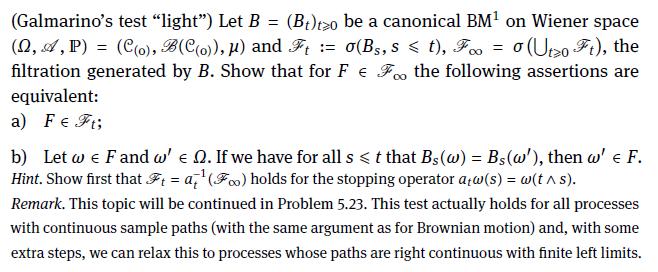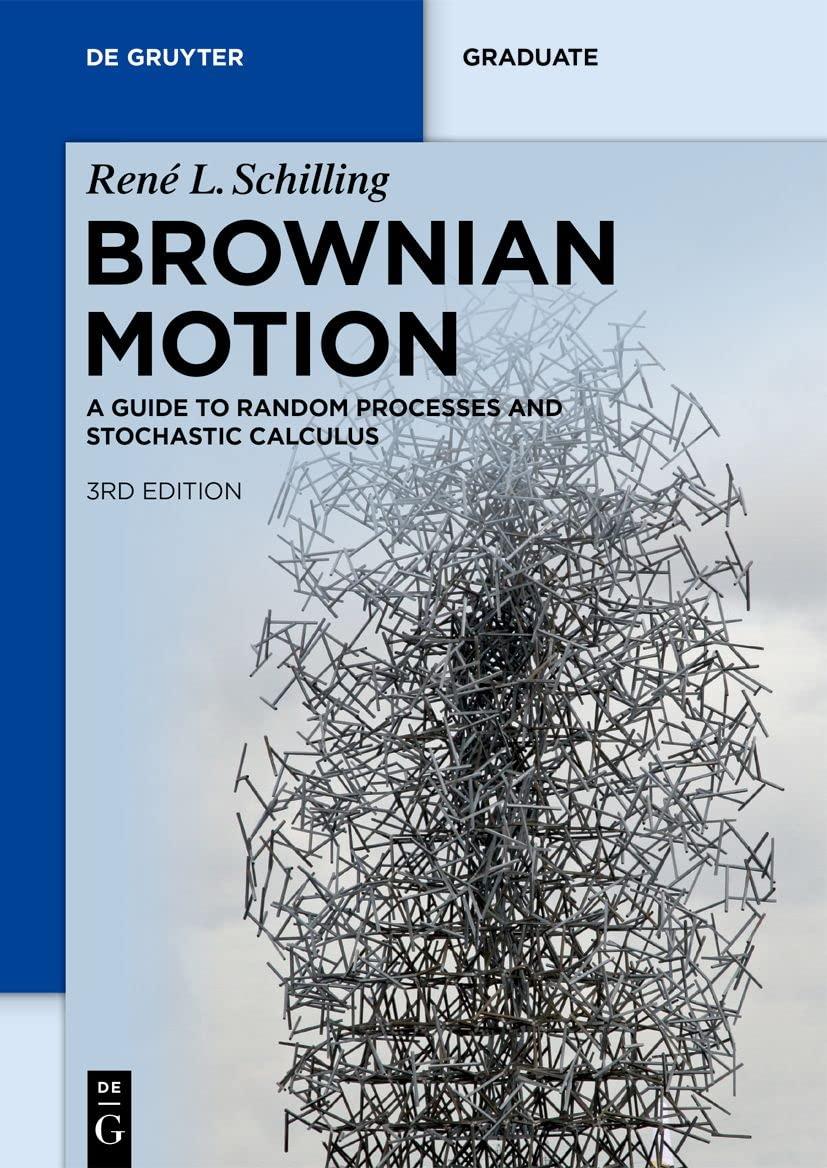Let (B=left(B_{t} ight)_{t geqslant 0}) be a canonical (mathrm{BM}^{1}) on Wiener space ((Omega, mathscr{A}, mathbb{P})=left(mathcal{C}_{(0)}, mathscr{B}left(mathcal{C}_{(0)} ight),
Question:
Let \(B=\left(B_{t}\right)_{t \geqslant 0}\) be a canonical \(\mathrm{BM}^{1}\) on Wiener space \((\Omega, \mathscr{A}, \mathbb{P})=\left(\mathcal{C}_{(0)}, \mathscr{B}\left(\mathcal{C}_{(0)}\right), \mu\right)\) and \(\mathscr{F}_{t}:=\sigma\left(B_{s}, s \leqslant t\right), \mathscr{F}_{\infty}=\sigma\left(\bigcup_{t \geqslant 0} \mathscr{F}_{t}\right)\), the filtration generated by \(B\). Show that for \(F \in \mathscr{F}_{\infty}\) the following assertions are equivalent:
a) \(F \in \mathscr{F}_{t}\);
b) Let \(\omega \in F\) and \(\omega^{\prime} \in \Omega\). If we have for all \(s \leqslant t\) that \(B_{s}(\omega)=B_{s}\left(\omega^{\prime}\right)\), then \(\omega^{\prime} \in F\).Show first that \(\mathscr{F}_{t}=a_{t}^{-1}\left(\mathscr{F}_{\infty}\right)\) holds for the stopping operator \(a_{t} \omega(s)=\omega(t \wedge s)\).
Remark. This topic will be continued in Problem 5.23. This test actually holds for all processes with continuous sample paths (with the same argument as for Brownian motion) and, with some extra steps, we can relax this to processes whose paths are right continuous with finite left limits.
Data From Problem 5.23

Step by Step Answer:

Brownian Motion A Guide To Random Processes And Stochastic Calculus De Gruyter Textbook
ISBN: 9783110741254
3rd Edition
Authors: René L. Schilling, Björn Böttcher





